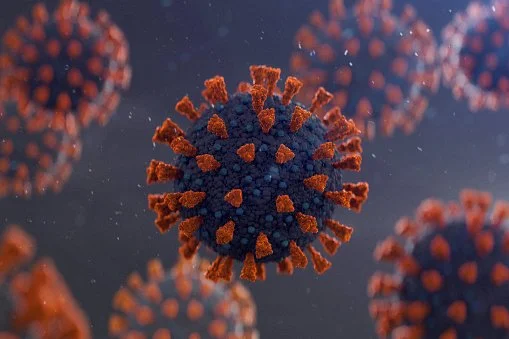Omicron is upon us. From Dec. 20 to Dec. 23, over 40,000 Ohioans tested positive for COVID-19, the most of any four-day stretch ever. As a matter of fact, each of the days in that window topped the previous single-day high of 13,374 cases recorded on Nov. 30, 2020, giving us the new first, second, and third highest days for positive tests to date.
Despite 59% of the population receiving a COVID vaccine, mask mandates in cities across the state, and continued social distancing from persistent corporate work from home policies and reduced in-person shopping, coronavirus rages on in Ohio.
Don’t take this to mean these measures aren’t working. Despite the high case numbers, hospitalization has been leveling off and deaths have been dropping, suggesting vaccination could be lessening the symptoms of COVID. The evidence we have suggest mask mandates do reduce infection on the margin, though we haven’t studied this phenomenon with omicron variants yet. And social distancing is surely having some impact on slowing the spread of the virus.
Omicron continues to be a problem in Ohio, though, sending holiday plans into disarray and most dangerously running through hospital staffs and putting further strain on the health care system when it needs capacity the most.
The Centers for Disease Control and Prevention has issued new guidance this week reducing recommended quarantine time after exposure, partly because of new evidence suggesting transmission typically happens within three days of onset of symptoms and partly to allow hospital workers to get back on the job and help people when they are at lower risk of transmission. Policy continues to evolve as we learn more and the science advances in our understanding of this virus.
Ohio could be doing more with vaccinations. The state is only 59% fully vaccinated among working-age adults, good for 36th in the country among states in working-age vaccination rate. Hopefully the new OSHA vaccine mandate will push more people to be vaccinated, which will lesson spread and symptoms and save lives.
The harsh reality of this virus, though, is that vaccination rates in Ohio will do little to slow the evolution of the virus. Variants like delta and omicron are not developing in the relatively-highly-vaccinated United States, they are developing in parts of the world that still do not have access to the vaccine and have not been able to administer it to the general population.
Currently, three out of every four people in the U.S. and Canada has received at least one vaccination shot. Asia and Europe are close to that threshold, with about two out of every three people on those continents having received a vaccination.
In the Middle East, only about half the population has received a shot. In Africa, the number is abysmal: only 1 in 8 Africans have received a shot. This means over a billion Africans have not received a single COVID-19 shot.
Yes, vaccination in Ohio is important. But even if we got our 55% fully-vaccinated rate up to Pennsylvania’s 64% rate or even Vermont’s 77% rate, that would do little to slow the evolution of the virus, which has now lead to a strong breakthrough strain with omicron.
Patting ourselves on the backs for increasing vaccination rates in Ohio would be like Europe congratulating itself for phasing out carbon emissions over the next twenty years while the rest of the world burns coal. Yes, our policy matters here, but this is an issue that the world needs to tackle, not one we can handle on our own.
This commentary first appeared in the Ohio Capital Journal.

